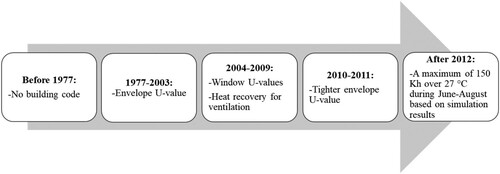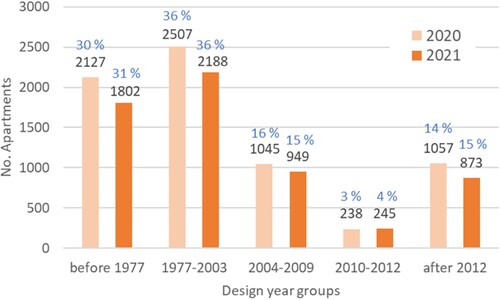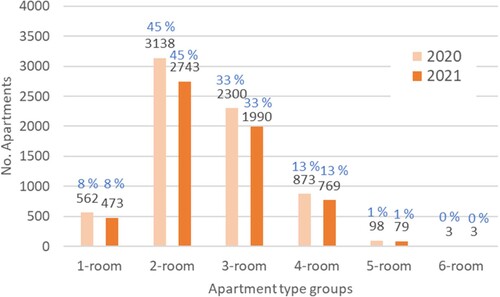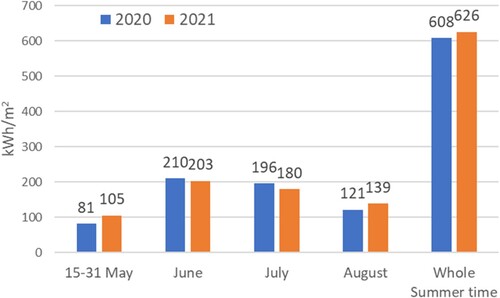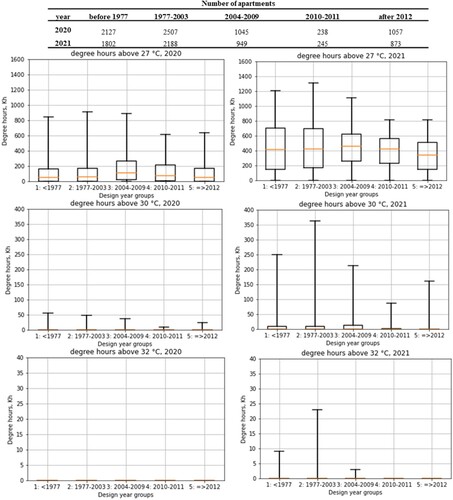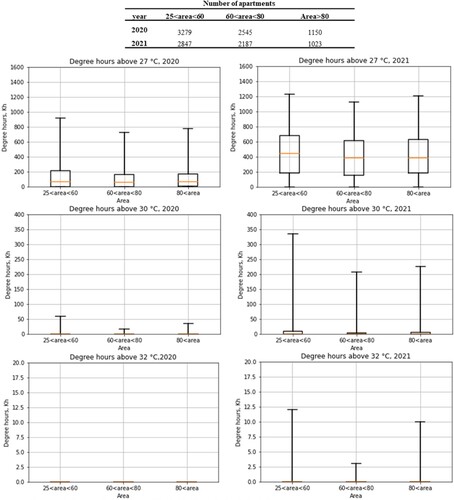Figures & data
Table 1. Summary of the literature review on the overheating risk through field measurements.
Table 2. Statistics of the mean outdoor air temperature at the Helsinki-Vantaa weather station in summers (between May 15 and August 31) 1989–2021.
Figure 7. The percentage of apartments with the maximum hourly temperature of the summer above 27°C, 30°C, and 32°C. 6,974 apartments in 2020 and 6,056 apartments in 2021 are analyzed.

Figure 8. Degree hours above 27°C, 30°C, and 32°C for 98% of the apartments during the whole summer of 2020 and 2021.

Figure 9. Degree hours above 27°C, 30°C, and 32°C for 98% of the apartments during the relaxing time (21:00–8:00) of the whole summer in 2020 and 2021.

Table 3. Post hoc test results of statistically significant differences for degree hours above 27°C in different design year groups. (The values in the brackets are P-value results.)
Table 4. Post hoc test results of statistically significant differences for degree hours above 27°C in different types of apartments. (The values in the brackets are P-value results.)
Table 5. Post hoc test results of statistically significant differences for degree hours above 27°C in different area categories (The values in the brackets are p-value results).

![Figure 1. The cities in the Helsinki Region [43].](/cms/asset/de762ccf-43d5-4c61-b408-c72934331d58/rbri_a_2253338_f0001_oc.jpg)
